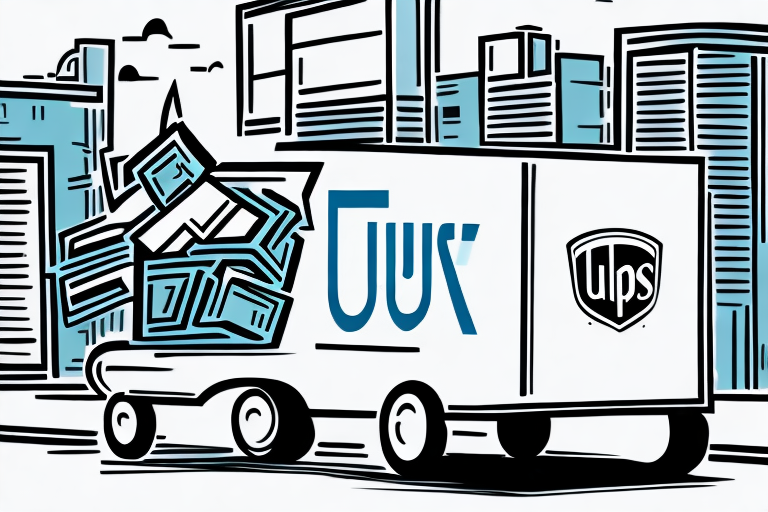Does USPS Insure Packages? A Comprehensive Guide to USPS Insurance
As a frequent online shopper or someone who ships packages regularly, you may have wondered about the safety and security of your packages in transit. Losing a shipment or receiving a damaged package can be frustrating and result in significant financial loss. This is where USPS insurance comes in. In this comprehensive guide, we'll explore what USPS insurance is and provide all the information you need to make an informed decision.
Understanding the Importance of Insurance for Your Packages
Before delving into USPS insurance policies, it's essential to understand why insuring your packages is crucial. Even with reliable service providers, packages can get lost, damaged, or stolen during transit. According to the U.S. Postal Service, there was a 2% increase in lost packages in 2023 compared to the previous year. By opting for insurance, you ensure that in case of any unfortunate incidents, you will be reimbursed for your lost or damaged goods.
Moreover, insurance provides peace of mind for both the sender and the receiver. The sender can be confident that their package is protected, while the receiver can trust that they will receive their package in the same condition it was sent. This mutual trust fosters a positive shipping experience and strengthens business relationships.
It's also important to note that some items may not be covered by standard insurance policies. Valuable items such as jewelry, antiques, or electronics may require additional coverage. Always check with your service provider to understand their insurance policies and ensure adequate protection for your package.
Types of USPS Insurance Available for Your Packages
USPS offers a variety of insurance policies tailored to different needs. Here are some of the most popular options:
- Priority Mail Express Insurance: Provides insurance coverage for urgent shipments with guaranteed overnight delivery.
- Priority Mail Insurance: Suitable for packages shipped within 1-3 days, offering reliable insurance coverage.
- First-Class Package Service Insurance: Ideal for lightweight packages, offering basic insurance coverage.
- International Insurance: Covers packages sent to over 190 countries, ensuring global protection.
How Much Does USPS Insurance Cost?
The cost of USPS insurance varies based on the package's value and the type of insurance selected. Typically, USPS insurance starts at $1.50 for packages valued up to $50 and can extend up to $6,000 for packages valued up to $5,000. As a general guideline, it's advisable to keep the insured value of a package below its actual cost to manage expenses effectively.
USPS insurance covers the declared value of the package, not any sentimental or emotional value attached to the items. Additionally, certain items like perishable goods and live animals are ineligible for USPS insurance. For packages requiring coverage beyond $5,000, consider purchasing additional insurance through a third-party provider, but ensure you compare providers to get the best coverage and pricing.
How to Purchase USPS Insurance for Your Packages
Purchasing USPS insurance is straightforward and can be done online or at any USPS location:
- Online: When sending a package through the USPS website, select the insurance option while creating the shipping label.
- In-Person: Visit a USPS location, and an associate will assist you in purchasing insurance when shipping your package.
Remember, USPS insurance covers the value of the package's contents, not the shipping cost. There are also restrictions on insurable items, such as prohibited or hazardous materials. Always review the USPS insurance guidelines before making a purchase.
If you need to file a claim for a lost or damaged package, you can do so online or at a USPS location. Provide proof of the item's value, shipping costs, and any relevant documentation. It's crucial to file claims promptly, as there are time limits for submission and processing.
What Items are Covered by USPS Insurance?
USPS insurance covers non-negotiable documents, merchandise, and personal items sent both domestically and internationally. Coverage includes damage, loss, or theft during transit. However, certain items are excluded from coverage:
- Perishable goods
- Live animals
- Hazardous materials
- Cash
The maximum coverage amount depends on the mail service used and the declared value of the item. Additionally, USPS offers supplementary services like signature confirmation and restricted delivery for an extra fee, enhancing the security of valuable or sensitive shipments.
What Items are Not Covered by USPS Insurance?
While USPS provides comprehensive insurance, some exceptions exist. Items not covered include:
- Live animals
- Cash
- Perishable food items
- Hazardous materials
- Cigarettes
Moreover, prohibited items such as illegal drugs, counterfeit goods, and stolen property are not eligible for USPS insurance. Improperly packaged or labeled items that increase the risk of damage or loss during transit are also excluded from coverage.
How to File a Claim with USPS for a Damaged or Lost Package
If your insured package is lost, damaged, or stolen, you must file a claim with USPS within 60 days of mailing. To file a claim, provide the following:
- Proof of insurance
- Proof of value
- Evidence of damage or loss
The USPS may request additional documentation, such as photos of the damaged package or contents, receipts for the items, or a written statement describing the damage or loss. Keeping all relevant documentation on hand will facilitate a smoother claims process.
Tips for Preventing Damage or Loss of Your Package During Shipping
While you can't control every aspect of shipping, you can take steps to minimize the risk of damage or loss:
- Use a sturdy, well-sealed box or envelope to pack your items.
- Ensure that your address label is clear and legible.
- Use sufficient cushioning materials like bubble wrap, packing peanuts, or crumpled paper to protect your items.
- Choose a reliable shipping method with tracking features.
- Insure your packages, especially for valuable items.
Avoid overpacking, which can cause the box to burst open during transit, leading to damage or loss. Use the appropriate size for your box or envelope and fill any empty spaces to prevent movement. Including a packing slip or invoice inside the package helps the recipient identify the contents and serves as proof of value if needed.
Additionally, include your contact information on the packing slip or invoice in case the recipient needs to reach out regarding the shipment.
USPS Insurance vs. Private Shipping Insurance: Which is Better?
When comparing USPS insurance with private shipping insurance, consider factors like coverage, cost, and claims process. Private shipping insurance may offer more comprehensive coverage but often comes at a higher price. Additionally, filing claims with private insurers can sometimes be more complex compared to the streamlined process with USPS.
The choice between USPS and private insurance ultimately depends on your specific shipping needs and budget. For high-value items, private insurance might provide the additional coverage you require, whereas USPS insurance is generally sufficient for most standard shipments.
Now that you have a thorough understanding of USPS insurance policies, you can make an informed decision on whether to insure your packages. While insurance doesn't guarantee that your package will arrive safely, it does provide financial protection and peace of mind in the event of loss or damage.
Some private shipping insurance providers offer additional services, such as advanced tracking and delivery confirmation, which may not be available with USPS insurance. These services can be particularly beneficial for businesses that rely on timely and accurate deliveries. Weigh the cost of these additional services against their benefits to determine if they're a worthwhile investment for your shipping needs.








